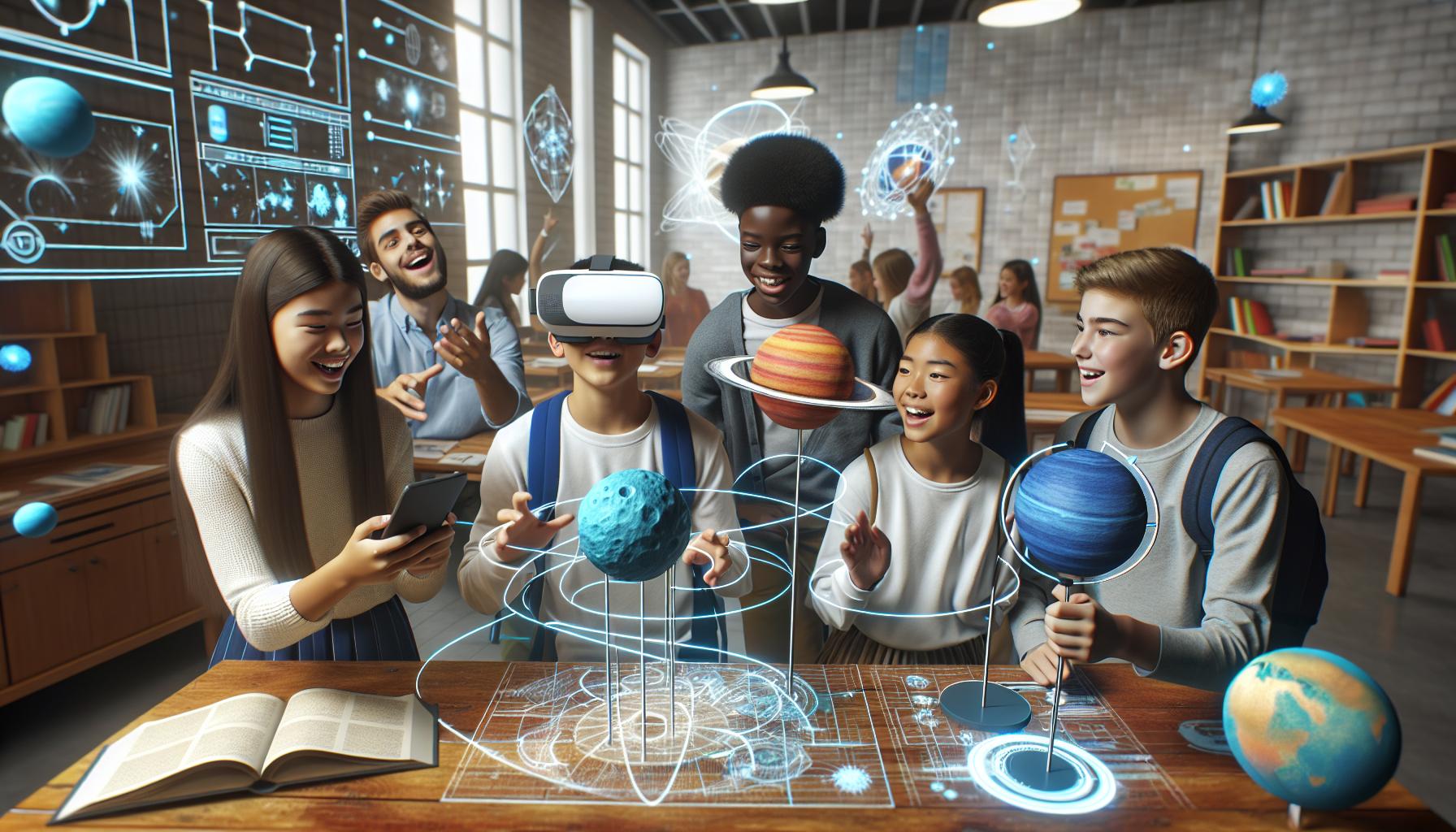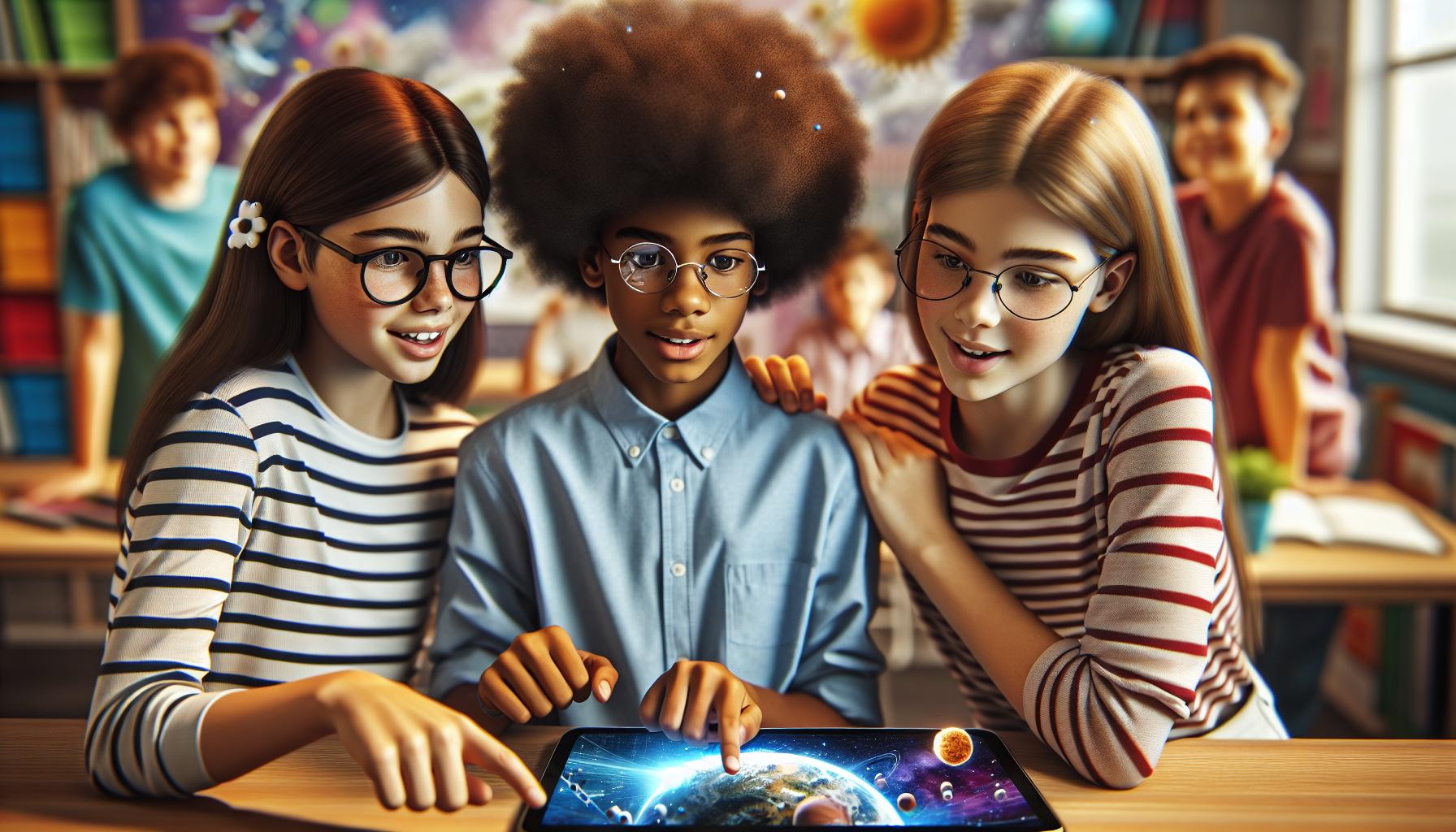Imagine walking into a classroom where textbooks come to life and history lessons involve dodging dinosaurs. Augmented reality (AR) is transforming education from a passive experience into an interactive adventure. With AR, students aren’t just learning about the solar system; they’re taking a virtual trip through it, dodging asteroids and exploring planets as if they’re astronauts.
This tech isn’t just for video games or sci-fi movies anymore. It’s reshaping how students engage with material, making learning more exciting and memorable. Teachers are becoming guides in a digital wonderland, where every lesson is a chance to spark curiosity and creativity. As AR continues to evolve, classrooms are set to become playgrounds of knowledge, where the only limit is imagination. Why settle for ordinary when extraordinary is just a headset away?
Augmented Reality in the Classroom
Augmented reality (AR) enhances traditional education by creating immersive experiences. AR technology integrates digital information with the real world, offering interactive learning opportunities. With AR, students engage in subjects like biology and history through real-time visualizations. For instance, 3D models of the human body can appear on classroom desks, allowing students to explore anatomy in detail.
Educators play a crucial role as facilitators in this environment. They guide students in utilizing AR applications that promote exploration and creativity. Schools report improved student engagement; statistics show that 72% of teachers noticed increased interest in subjects when using AR tools.
Curricula are also adapting to incorporate AR effectively. Many institutions integrate AR lessons into science experiments and art projects, enhancing hands-on learning. Examples of AR tools include Google Expeditions and Merge Cube, which provide diverse educational content that caters to various learning styles.
Classroom dynamics shift significantly with AR. Students often collaborate on projects, using AR to visualize concepts together. They develop critical thinking skills and problem-solving abilities while navigating these interactive materials.
AR’s impact extends beyond individual subjects. It fosters a multidisciplinary approach to education, where students connect knowledge from different fields. By utilizing AR, classrooms transform into creative hubs, encouraging a culture of inquiry and innovation.
Benefits of Augmented Reality

Augmented reality (AR) significantly enhances the learning experience in classrooms. Students engage with content in immersive ways, leading to numerous advantages.
Enhanced Engagement
Active participation in lessons increases as students interact with AR elements. Lessons transform into dynamic experiences through 3D models and virtual environments. Teachers notice improved enthusiasm, with 72% reporting heightened interest in subjects when using AR tools. Applications like Google Expeditions captivate students’ attention by bringing abstract concepts to life. This active involvement fosters collaboration among peers, as they explore and discuss visual phenomena together. Engaging AR scenarios create opportunities for hands-on learning, which ultimately sustains students’ focus and curiosity throughout the educational process.
Improved Retention of Information
Retention of information receives a boost from AR technology. Visualizing concepts in real-time supports deeper understanding for students. When they manipulate 3D models or engage with interactive lessons, material becomes memorable. Research indicates that students retain information better after engaging with AR experiences compared to traditional methods. For example, visual interactions in biology or history lessons facilitate more effective learning. Repeated exposure to immersive content strengthens knowledge retention, reinforcing comprehension and recall over time. The integration of AR into curricula enhances the educational journey by transforming how students absorb and apply information.
Implementation Strategies

Implementing augmented reality (AR) in the classroom involves careful planning and execution. Schools must consider how to effectively integrate this technology into their existing curricula to maximize its benefits.
Integrating Technology into Curriculum
Curricula must adapt to seamlessly include AR applications. Teachers can design lessons that incorporate AR elements, enhancing subjects like science, history, and art. By including real-time visualizations, students gain hands-on experience, fostering deeper understanding. Schools can use tools like Google Expeditions or Merge Cube to enrich learning outcomes. Furthermore, AR can support diverse learning styles, allowing students to engage with content that resonates with them. This integration encourages collaboration among peers as they explore concepts together, exemplifying a multidisciplinary approach.
Training Educators and Students
Training educators plays a vital role in this implementation. Professional development programs should focus on equipping teachers with the skills needed to utilize AR effectively. By engaging educators in workshops and hands-on training sessions, schools can boost their confidence in using this technology. Simultaneously, students should receive instruction on how to access and interact with AR tools. Integrating AR-specific lessons prepares them to harness the full potential of this technology. Research indicates that teacher preparedness significantly impacts student engagement, resulting in increased interest during AR-enhanced activities.
Challenges and Limitations

While augmented reality (AR) transforms classroom learning, several challenges hinder its full integration.
Technical Issues
Technical issues frequently arise, impacting the effectiveness of AR experiences. Connectivity problems can disrupt lessons, leaving students frustrated and disengaged. Hardware limitations also pose challenges, as not every classroom has access to high-quality AR devices. Inconsistent software performance can lead to interruptions during lessons, diminishing the impact of immersive experiences. Schools may struggle with inadequate bandwidth or outdated equipment, which complicates seamless AR implementation. Training educators to troubleshoot technical challenges requires additional resources and support. As AR technology evolves, addressing these technical barriers remains essential for successful integration in educational settings.
Resistance to Change
Resistance to change often prevents schools from fully embracing AR in classrooms. Not all educators feel confident in incorporating new technologies into their teaching practices. Fear of the unknown and reluctance to adjust traditional methods contribute to this hesitation. Some educators may prefer established teaching techniques, viewing AR as an unnecessary complexity. Institutional challenges can also arise, where school administrations hesitate to invest in AR training and tools. This lack of support can stifle innovation, limiting opportunities for students to benefit from AR-enhanced learning. Overcoming resistance involves fostering a culture of continuous improvement and encouraging educators to explore new teaching approaches.
Future Trends in Augmented Reality
Emerging trends in augmented reality (AR) point towards a more immersive educational experience. Interactive learning environments will become the standard, allowing students to engage with content like never before. The integration of artificial intelligence with AR promises personalized experiences tailored to individual learning paces.
Teachers will utilize advanced AR tools that not only visualize content but also adapt in real time based on student responses. Enhanced collaboration features will enable students to work in groups, sharing AR experiences and insights. Statistics show that 72% of teachers recognize increased engagement when employing AR, highlighting its impact on class dynamics.
Development of AR curricula has progressed, with educators placing emphasis on critical thinking skills. Subjects like mathematics will incorporate 3D visualizations, making abstract concepts tangible. Art programs will leverage AR for interactive exhibits, offering students a creative outlet combined with technology.
Future applications will likely extend beyond traditional classroom settings. Students could experience real-world scenarios through AR simulations, preparing them for future careers. Research predicts that educational institutions will increasingly adopt AR, providing students with valuable skills in a technology-driven job market.
Investment in AR technology will rise, prompting schools to upgrade infrastructure and training programs. By focusing on professional development, educators will become adept at using AR tools effectively. As interest in AR continues to grow, educators must embrace this technology to enhance student engagement and learning outcomes.
Augmented reality
Augmented reality is revolutionizing education by creating immersive learning environments that captivate students’ attention. As technology continues to advance, classrooms are evolving into interactive spaces where curiosity thrives. The integration of AR tools not only enhances engagement but also fosters collaboration among students, promoting critical thinking and problem-solving skills.
Despite the challenges of implementation and resistance to change, the benefits of AR in education are undeniable. With proper training and support for educators, schools can harness the full potential of AR to transform traditional lessons into dynamic experiences. As AR becomes more prevalent, it paves the way for a future where learning is limited only by imagination, preparing students for a world that increasingly relies on innovative technologies.



![[author] arkit and unity: build a drivable car in augmented reality course](https://wzhi58.com/wp-content/uploads/2024/11/1b145239-102d-43d9-8674-80113a75e375_hGjkhjyx0SxSyWk99mwY3-1024x585.jpeg)